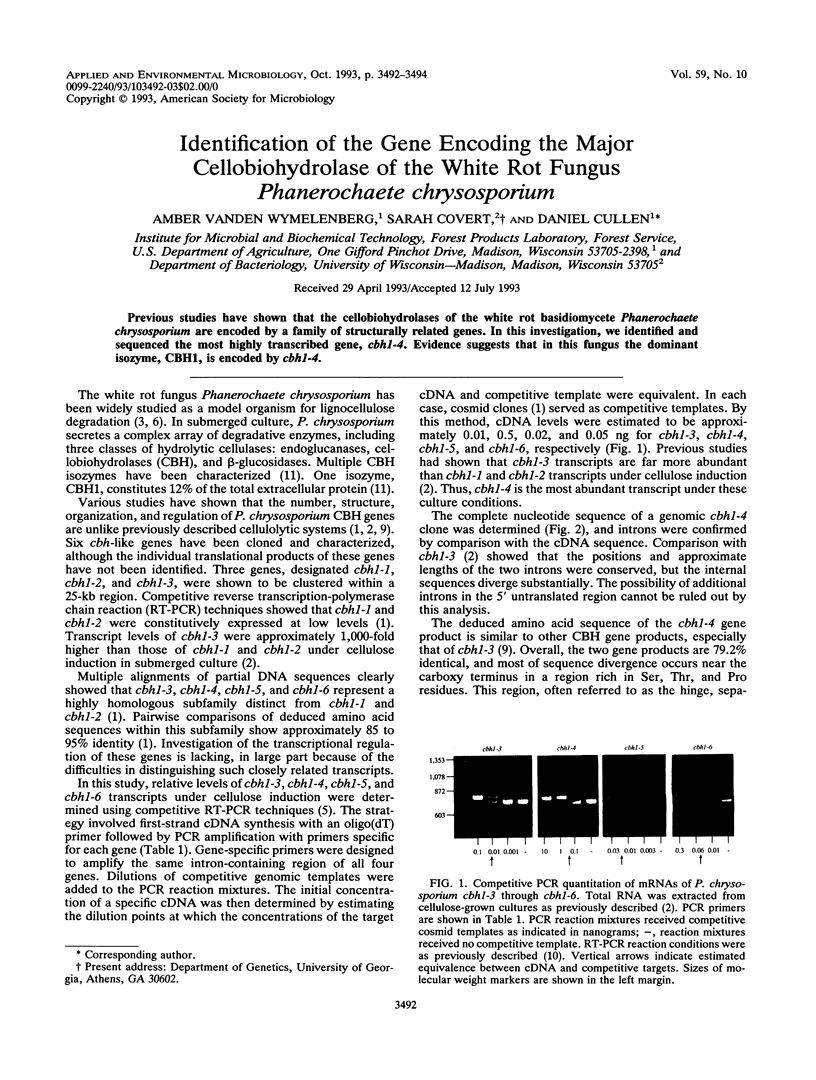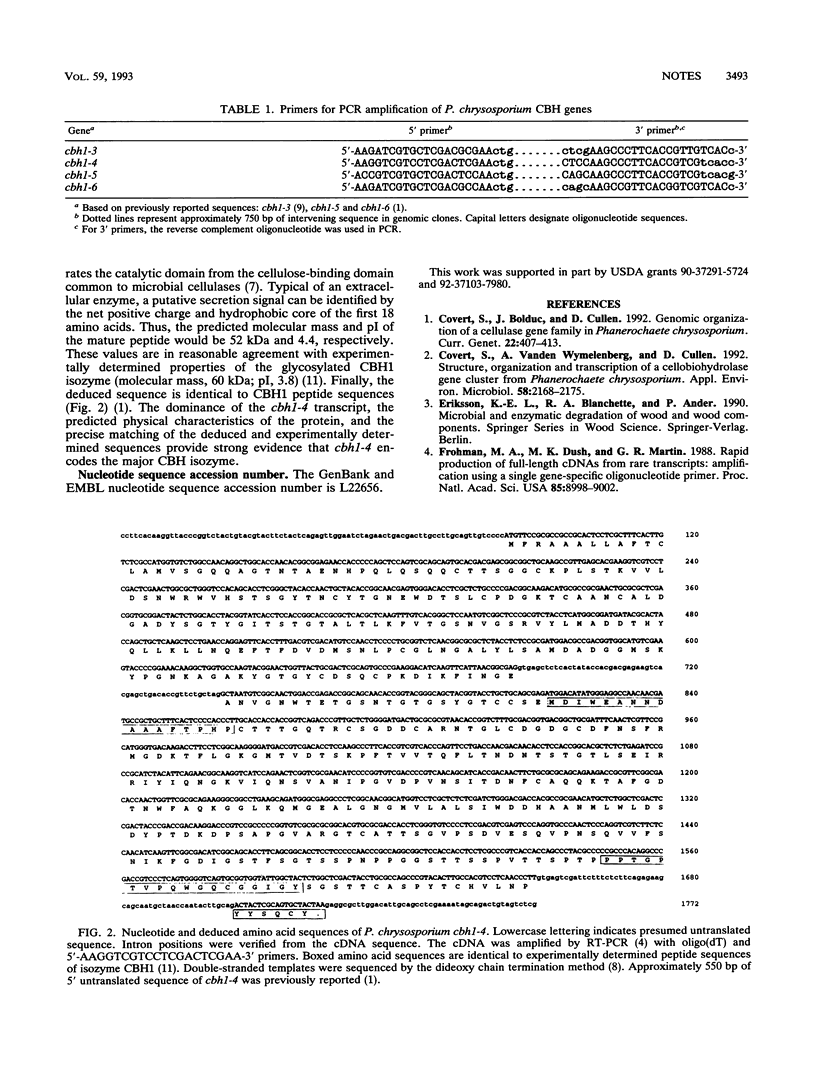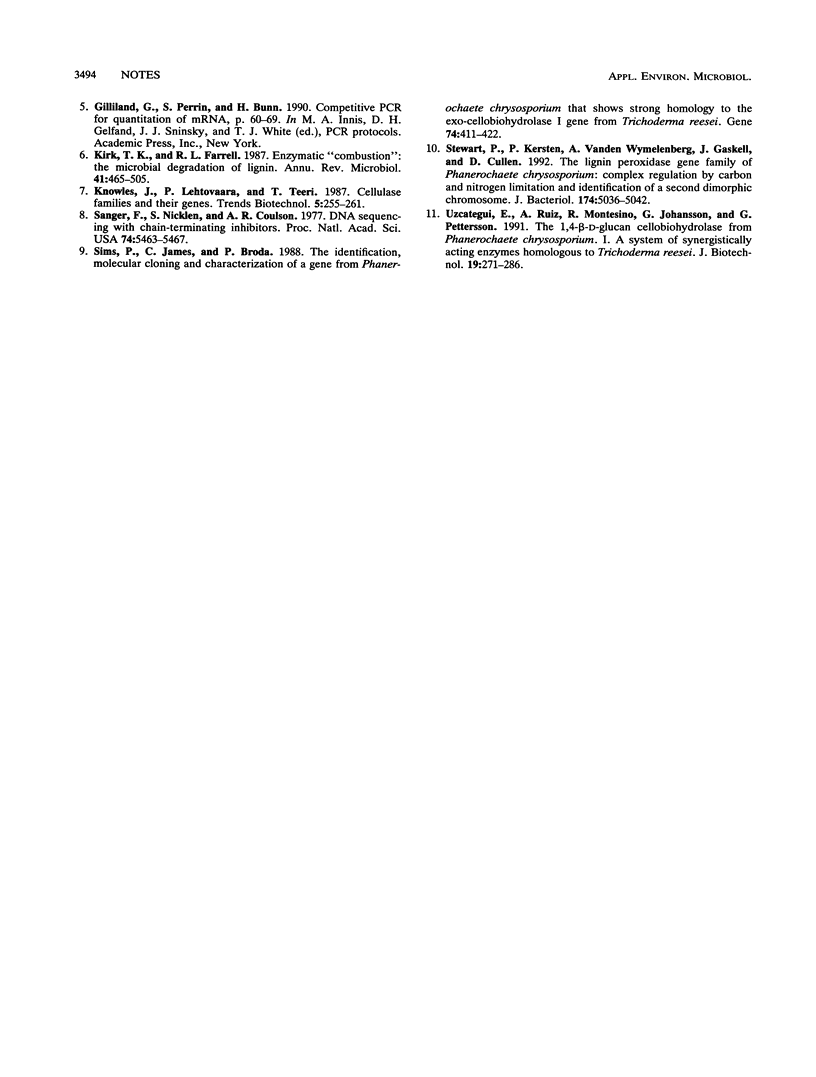Abstract
Previous studies have shown that the cellobiohydrolases of the white rot basidiomycete Phanerochaete chrysosporium are encoded by a family of structurally related genes. In this investigation, we identified and sequenced the most highly transcribed gene, cbh1-4. Evidence suggests that in this fungus the dominant isozyme, CBH1, is encoded by chb1-4.
Full text
PDF


Images in this article
Selected References
These references are in PubMed. This may not be the complete list of references from this article.
- Covert S. F., Bolduc J., Cullen D. Genomic organization of a cellulase gene family in Phanerochaete chrysosporium. Curr Genet. 1992 Nov;22(5):407–413. doi: 10.1007/BF00352442. [DOI] [PubMed] [Google Scholar]
- Covert S. F., Vanden Wymelenberg A., Cullen D. Structure, organization, and transcription of a cellobiohydrolase gene cluster from Phanerochaete chrysosporium. Appl Environ Microbiol. 1992 Jul;58(7):2168–2175. doi: 10.1128/aem.58.7.2168-2175.1992. [DOI] [PMC free article] [PubMed] [Google Scholar]
- Frohman M. A., Dush M. K., Martin G. R. Rapid production of full-length cDNAs from rare transcripts: amplification using a single gene-specific oligonucleotide primer. Proc Natl Acad Sci U S A. 1988 Dec;85(23):8998–9002. doi: 10.1073/pnas.85.23.8998. [DOI] [PMC free article] [PubMed] [Google Scholar]
- Kirk T. K., Farrell R. L. Enzymatic "combustion": the microbial degradation of lignin. Annu Rev Microbiol. 1987;41:465–505. doi: 10.1146/annurev.mi.41.100187.002341. [DOI] [PubMed] [Google Scholar]
- Sanger F., Nicklen S., Coulson A. R. DNA sequencing with chain-terminating inhibitors. Proc Natl Acad Sci U S A. 1977 Dec;74(12):5463–5467. doi: 10.1073/pnas.74.12.5463. [DOI] [PMC free article] [PubMed] [Google Scholar]
- Sims P., James C., Broda P. The identification, molecular cloning and characterisation of a gene from Phanerochaete chrysosporium that shows strong homology to the exo-cellobiohydrolase I gene from Trichoderma reesei. Gene. 1988 Dec 30;74(2):411–422. doi: 10.1016/0378-1119(88)90174-6. [DOI] [PubMed] [Google Scholar]
- Stewart P., Kersten P., Vanden Wymelenberg A., Gaskell J., Cullen D. Lignin peroxidase gene family of Phanerochaete chrysosporium: complex regulation by carbon and nitrogen limitation and identification of a second dimorphic chromosome. J Bacteriol. 1992 Aug;174(15):5036–5042. doi: 10.1128/jb.174.15.5036-5042.1992. [DOI] [PMC free article] [PubMed] [Google Scholar]
- Uzcategui E., Ruiz A., Montesino R., Johansson G., Pettersson G. The 1,4-beta-D-glucan cellobiohydrolases from Phanerochaete chrysosporium. I. A system of synergistically acting enzymes homologous to Trichoderma reesei. J Biotechnol. 1991 Jul;19(2-3):271–285. doi: 10.1016/0168-1656(91)90064-3. [DOI] [PubMed] [Google Scholar]



